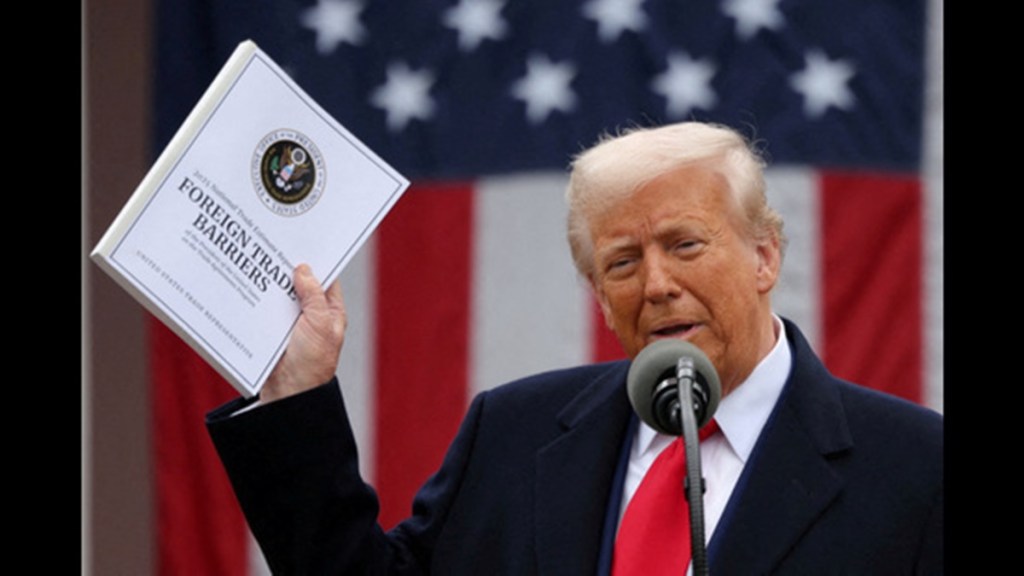The US on Friday clarified in an updated document that the reciprocal tariff to apply on India from April 9 will be 26%, instead of the widely reported rate of 27%.
A placard displayed by US president Donald Trump on April 2 while unveiling the extra customs levies on as many as 60 countries, showed the levy for India at 26%. But later, the annexure to the trelevant White House statement showed the tariff rate for the country at 27%, leading to ambiguity.
Not just for India, the updated White House documents have now revised duties on more than dozen other countries including Bosnia and Herzegovina, Botswana, Cameroon, Falkland Island, Malawi and Myanmar.
On Thursday itself the difference had become visible, sparking off some confusion. Later the ministry of commerce officials said they will go by the official statement. Industry sources say that 1% reduction is unlikely to make much of a difference. These duties come on the top of existing duties that the US imposes.
On India and all other targets of reciprocal tariffs the baseline duty of 10% will be effective from April 05. The remaining country specific additional ad-valorem duty will be effective from April 09. Which takes the total additional duties on India to 26%. These duties are in addition to the ones that existed earlier, with the average MFN rate in the US being 3.3%. The goods in transit would be spared these additional duties.
While unveiling the new duties, Trump said that they are “discounted” as they are just half of what they should be if strict reciprocity was followed and all tariff and non-tariff barriers are taken into account. A formula that takes into consideration the trade deficit run by the US is used to estimate the current tariff level of the countries targetted. For India the quantum of tariffs that could have addressed all these barriers is computed at 52%, a rate which is out of sync with ground realities. India’s average tariff is around 17% now, with the trade-weighted rate being even lowe at 12%.
The US has offered a way out of these higher tariffs if any trade takes significant steps to remedy non-reciprocal trade arrangements and align sufficiently with the United States on economic and national security matters
The US is the biggest market for goods and services for India. According to data from the US trade representative’s office, India’s trade surplus with the US was $45.7 billion in 2024, a growth of 5.4% over 2023. Total goods trade between the two countries was $129.2 billion in 2024, with India’s exports at $87.4 billion, up 4.5% on year while imports were $41.8 billion, up 3.4% on year.

